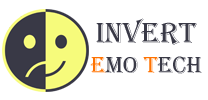
Comparison 1: In the case of traditional marketing, the marketing techniques are outbound, i.e. you need to reach out to the audience and expect that the information may invoke sometime of reaction from the people. The marketing does not see if the public is interested in the advertisement.
In the case of digital marketing, the market strategy is inbound, i.e. it involves the ability to target to a particular set of required audience, and as a result, the advertising can go viral in social platforms.
Comparison 2: In the case of traditional marketing, the engagement is a one-way path only. The audience does not have much say in it, and the public is simply on the receiving end of it. The advertisers only push the information in the hope that it will invoke some interest in the customers.
In the digital marketing, the involvement is in both the direction which makes it rather more happening regarding creating more opportunity and understanding the needs of the customer.
Comparison 3: Traditional marketing is static and requires a lot of strategic planning to ensure the idea gets to a large mass of audience. In doing so can penetrate to the masses who will be interested in the product or services.
Whereas, in digital marketing, the marketing strategies are dynamic and they can quickly respond in accordance to the need of the market and therefore has more spontaneity and the ability to penetrate to a larger pool of customers.
In the end, although traditional marketing has a great role to play in spreading the word about any service or product, one cannot simply ignore the cost effectiveness and penetration rate of digital marketing with the added benefit that it is both way engagement of both advertisers and customers.






